
TEST How (not) to ruin white kitchen marble
What red wine and lemon can do to a marble surface?
A light-colored marble worktop in the kitchen is a real gift for those who value natural and beautiful stone in their home. However, there a plenty of horror stories going around about red wine and lemon stains. We asked the specialists from Marmi Futerno, one of the leading marble importers in Estonia, to test in practice how acidic foods affect marble. Here are the fresh results.
Introduction
Our test is rather extreme; it is not something you would see at home:
- marble was coated with a minimal protective layer (only the standard base layer applied in the factory, no after-care layers were added).
- thick layers of red wine and lemon juice were poured on the marble and left to stand at room temperature for 16 and 20 hours, respectively. Under normal conditions, the customer would also be taking care of the marble, that is, there would be more impregnation layers. Also, large stains are normally removed in less than 16-20 hours.
- this test reflects the worst-case scenario, in which the customer does not add any protective coating and leaves strong marble-damaging substances on the stone surface for a very long time.
How the test was carried out
- Before being exposed to wine, clean marble slabs were coated with a protective layer twice. This is standard procedure applied prior to releasing the stone surfaces to the customer.
- Marble slabs were covered with red wine and lemon for 16 hours during the first test and 20 hours during the second test. The wine and lemon stains were then removed using a conventional detergent and a cotton cloth. As the marble was thoroughly covered with wine and lemon juice, the substances have dried into a solid layer about a millimeter thick, which had to be rubbed with a cloth in order to be removed.
Test results
- Most noticeable stains were left on unprotected marble. That said, matt marble stained more than polished marble. In addition to the contour of the stain left on unprotected marble, the color of the red wine was also visible, and the area under the stain was coarser than the surrounding surface.
- Fairly large and noticeable stains were also left on the marble that was coated with Lithos+CTF agents. This marble sample achieved the second to last place. This may be due to the fact that these types of agents are primarily intended for use in bathrooms and on large floor areas. There are more effective and affordable agents available for treating kitchen surfaces.
- Tenax and KGS products share the first place. KGS was better at protecting polished stone and Tenax was better with matt stone. However, KGS is more expensive than Tenax, and KGS does not have a “Safe for contact with food” certificate. This means that the Tenax product is safer for people to use in their kitchens, even if cooking straight after treatment.
Conclusions
This test helps you make objective choices. A more expensive product may not necessarily show a better result than a more affordable product. Comparing the more expensive products from Federchemicals with the more affordable ones from Tenax reveals that Tenax yields better test results.
However, our test has been carried out in an “amateur style”, and we cannot claim that one product is definitely better than the other. We can only argue that in our test, which was carried out under normal conditions, marble remained better protected when Tenax product was used. The KGS protective coating showed great results but is significantly more expensive and only available in large jars, which is very difficult to use up within its shelf life.
In summary, the following can be said:
Firstly: based on the test results, the most practical choice for a care product is the Tenax stone impregnation agent.
Secondly: the factory standard coating is not enough to protect marble. It is important that a customer who purchased a marble worktop continues to care for it using an impregnation agent. During the first year of use, the impregnation agent can be applied as often as once a month. Tests have shown that the agent also helps to remove already formed stains from the marble if they are fresh.
Thirdly: matt marble is more sensitive and susceptible to stains than polished marble.
Fourthly: the effect of lemon juice on marble is worse than the effect of red wine (one would assume the opposite, due to the strong pigment in red wine). No red wine pigment was left on any of the marble slabs covered with protective agents, while the lemon juice stains were very visible (white etching outline, coarse surface)
Fifthly: it is clear, that regularly applying impregnating agents to stone fills in the pores and prevents liquids from penetrating the surface. Wine (both red and white), lemon, tomato, coffee, eggs and acidic chemicals are damaging to marble worktops. If, however, they are quickly wiped off an impregnated surface, our test showed no damage to the surface.
And lastly: when buying a marble worktop one should always ask the vendor for care instructions if they are not provided. When buying from us, the customer will receive a marble maintenance guide and a gift of either Tenax Gear or Tenax Drex impregnation agent, which should last for one year. Additional cans of protective agent can be purchased from Aunman showroom.
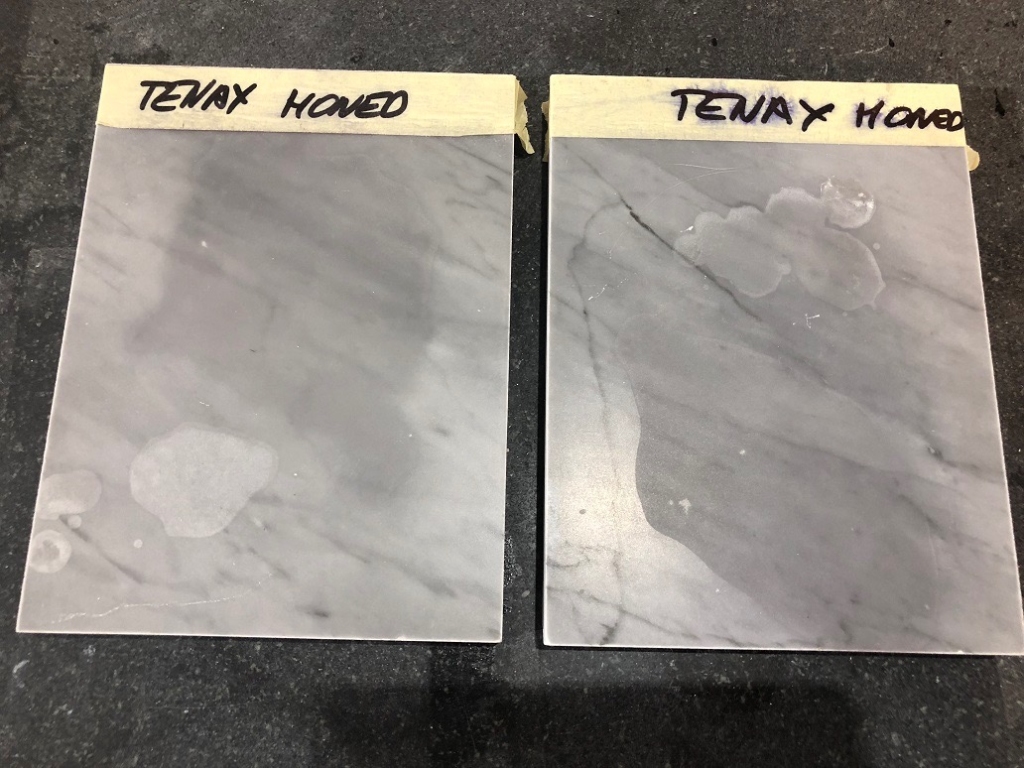
Bardiglio Nuvolato matt marble impregnated with Tenax Gear. 16-hour test and a 20-hour repeat test. No red wine pigment left, and as time passed, the stains became lighter and no longer stood out as much. Lemon stains are coarse and noticeable.
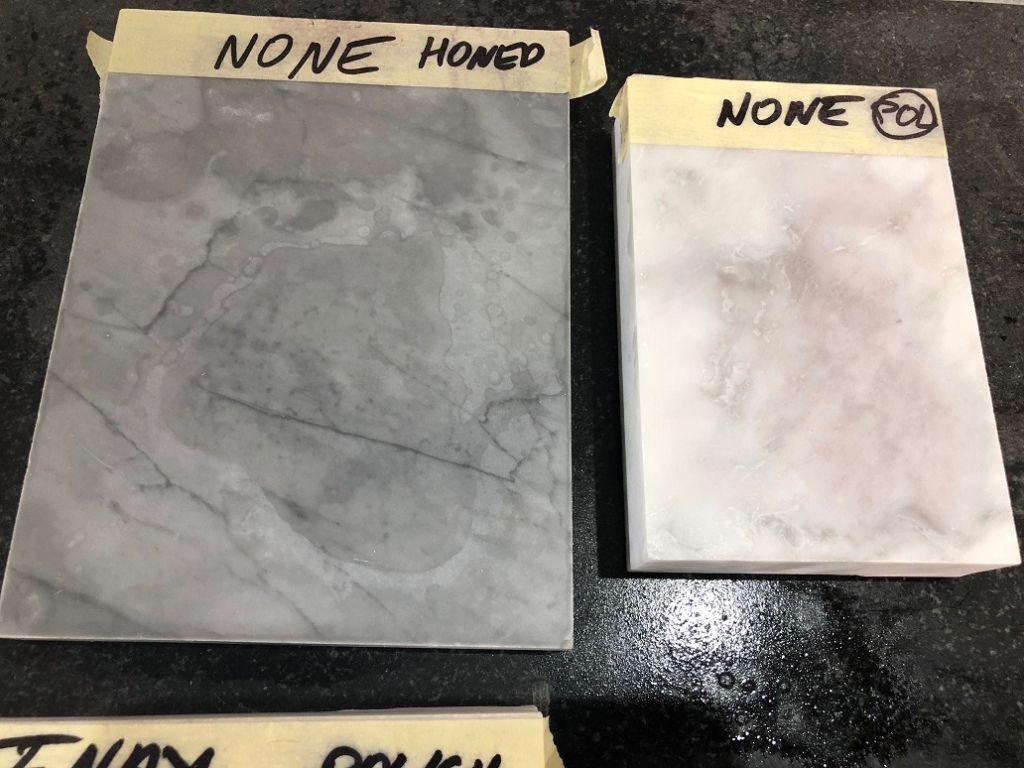
No impregnation coating added. Noticeable stains and visible red wine pigment left on both, white and gray, polished and matt marble surfaces.
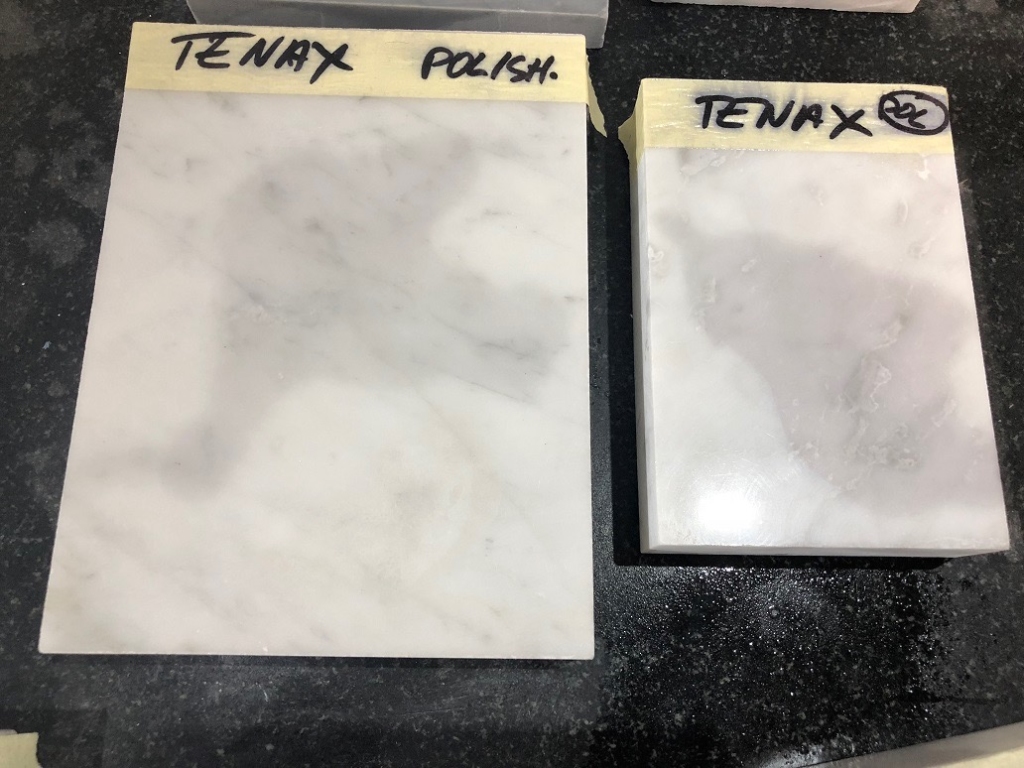
Trial with Tenax Gear impregnation agent on polished white marble, substances kept on for 16 and 20 hours. No red wine pigment left, lemon juice stains almost invisible, comparedMati pinnaga Bardiglio Nuvolato marmor, impregreeritud Tenax Gear kaitsevahendiga. Katse 16 tunniga ja kordukatse 20 tunniga. Punase veini pigmenti sisse ei jäänud ning aja möödudes muutuvad plekid heledamaks ja ei paista enam silma. Sidruni plekid on karedad ja silmapaistvad. to matt marble results. As time passed, the stains dried out and became invisible.
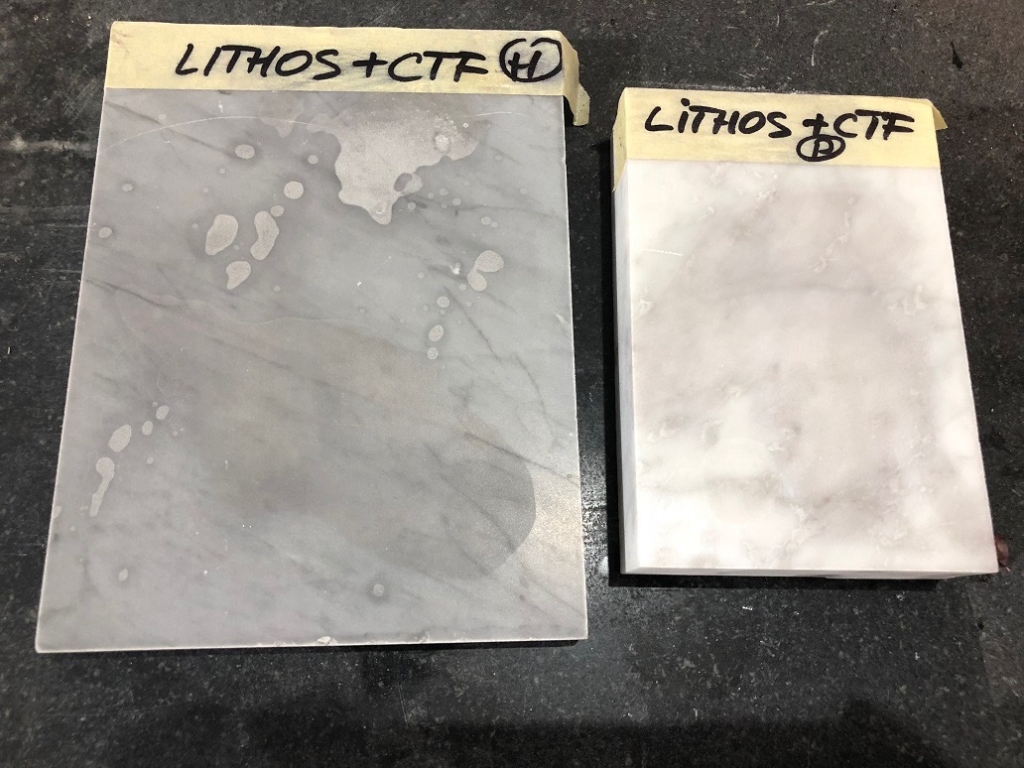
16-hour test with Lithos (moisture protection) and CTF-40 (stain protection) products. The stains are more visible than in case of other products. When using these agents, one must take into account that repeat impregnation is needed to achieve protection.
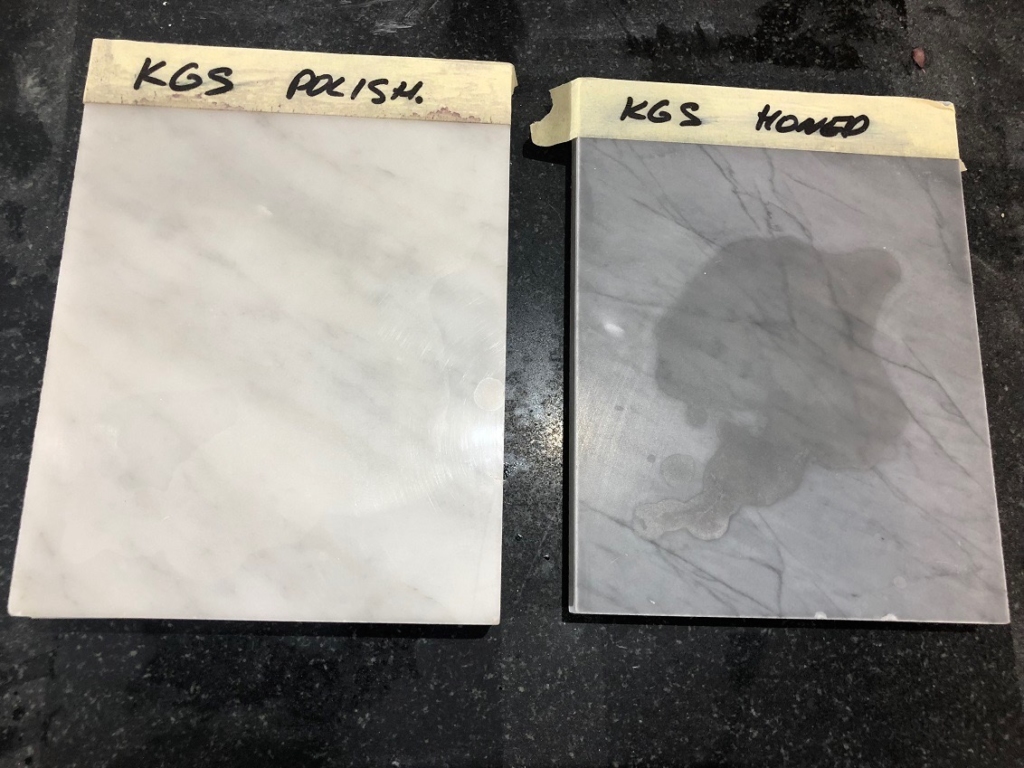
20-hour test with KGS coating. There were no stains on polished white marble, noticeable stains left on matt marble. This test shows that, under the same conditions, polished marble may retain no traces of substance, while tough stains are left on matt marble.
Aunman.ee